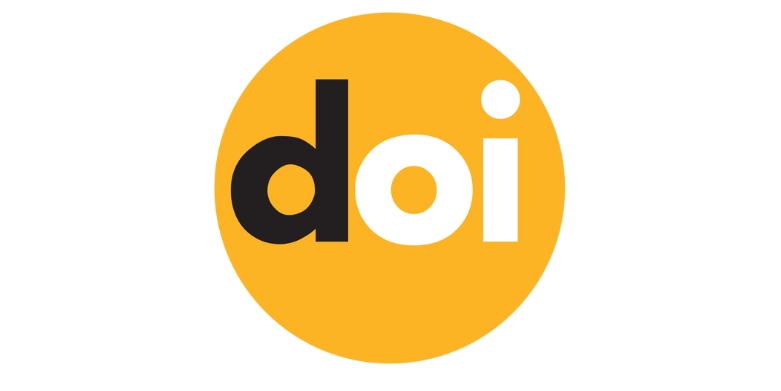"Digital Transformation in Accounting and Systems: Enhancing Productivity and Enabling Information Production Leap"
DOI:
https://doi.org/10.63053/ijmea.51Keywords:
Digital Transformation, Accounting Information Systems, Organizational Productivity, PLS-SEM, Emerging EconomiesAbstract
The rapid advancement of digital technologies has fundamentally reshaped accounting practices and information systems, offering new pathways to enhance organizational performance. Despite growing interest in digital transformation, there remains limited empirical evidence on how its integration into accounting functions influences productivity, particularly in emerging economies pursuing industrial revitalization. This study aims to examine the role of digital transformation in accounting and accounting information systems (AIS) in improving organizational productivity, with a focus on its potential to support strategic goals such as Iran’s "Production Leap." A quantitative research design was employed, based on data collected from 312 financial and IT managers across manufacturing and service organizations in five major industrial regions. A structured questionnaire was used to measure key constructs—digital transformation, AIS effectiveness, and productivity—using validated scales from prior literature. Data were analyzed through partial least squares structural equation modeling (PLS-SEM) using SmartPLS 4.0. The results confirm that digital transformation significantly enhances AIS effectiveness (β = 0.643, p < 0.001), which in turn positively impacts organizational productivity (β = 0.421, p < 0.001). A significant direct effect of digital transformation on productivity was also found (β = 0.217, p = 0.002), with AIS effectiveness fully mediating this relationship (indirect effect β = 0.271, t = 4.33). The model explains 68.3% of the variance in productivity, indicating strong predictive power. These findings highlight the strategic importance of modernizing accounting systems as a lever for operational efficiency and national development. The study contributes to both theory and practice by empirically validating the mediating role of AIS in the digital transformation–productivity nexus.
References
• Akhavan, P., & Khajeheian, D. (2023). A framework for digital transformation in accounting: Identifying key success factors in Iranian organizations. Journal of Information Systems Management, 15(2), 201–224.
• Alles, M. G. (2015). Drivers of the use and facilitators and obstacles of the evolution of big data by the audit profession. Accounting Horizons, 29(2), 439–449. https://doi.org/10.2308/acch-51021
• Barney, J. (1991). Firm resources and sustained competitive advantage. Journal of Management, 17(1), 99–120. https://doi.org/10.1177/014920639101700108
• Brynjolfsson, E., Rock, D., & Syverson, C. (2021). The productivity J-curve: How intangible investment drives long delays in productivity payoffs. American Economic Review: Insights, 3(2), 141–156. https://doi.org/10.1257/aeri.20200187
• Cao, Q., Chychyla, R., & Stewart, T. (2022). Big data analytics in financial statement audits: Opportunities and challenges. Journal of Emerging Technologies in Accounting, 19(1), 1–17. https://doi.org/10.2308/jeta-10687
• Cohen, J. (1988). Statistical power analysis for the behavioral sciences (2nd ed.). Lawrence Erlbaum Associates.
• Dai, J., & Vasarhelyi, M. A. (2017). Toward blockchain-based accounting and assurance. Journal of Emerging Technologies in Accounting, 14(2), 1–15. https://doi.org/10.2308/jeta-51804
• DeLone, W. H., & McLean, E. R. (2003). The DeLone and McLean model of information systems success: A ten-year update. Journal of Management Information Systems, 19(4), 9–30. https://doi.org/10.1080/07421222.2003.11045748
• DiMaggio, P. J., & Powell, W. W. (1983). The iron cage revisited: Institutional isomorphism and collective rationality in organizational fields. American Sociological Review, 48(2), 147–160. https://doi.org/10.2307/2095101
• Farahani, R., & Mohammadi, F. (2022). The impact of intelligent accounting systems on financial transparency and reduction of human errors. Iranian Journal of Accounting Research, 14(4), 133–152. https://doi.org/10.22034/ijar.2022.554321
• Fornell, C., & Larcker, D. F. (1981). Evaluating structural equation models with unobservable variables and measurement error. Journal of Marketing Research, 18(1), 39–50. https://doi.org/10.1177/002224378101800104
• Hair, J. F., Hult, G. T. M., Ringle, C., & Sarstedt, M. (2022). A primer on partial least squares structural equation modeling (PLS-SEM) (3rd ed.). Sage Publications.
• Hosseini, S. M. (2020). The effect of advanced accounting information systems on productivity in Iranian manufacturing industries. Journal of Accounting Knowledge, 11(3), 89–112. https://doi.org/10.22056/jak.2020.185245.1234
• IASB. (2018). Conceptual framework for financial reporting. International Accounting Standards Board.
• IFAC. (2020). Professional accountants in business: Digital skills and capabilities. https://www.ifac.org
• Kokina, J., & Davenport, T. H. (2017). Robotic process automation in accounting: A case study of implementation and impact. Journal of Emerging Technologies in Accounting, 14(1), 1–15. https://doi.org/10.2308/jeta-51782
• Krejcie, R. V., & Morgan, D. W. (1970). Determining sample size for research activities. Educational and Psychological Measurement, 30(3), 607–610. https://doi.org/10.1177/001316447003000308
• Mohammadi, A., Rezaei, S., & Asgari, M. (2022). The impact of digital transformation on the performance of accounting information systems in governmental organizations (Unpublished master's thesis). University of Tehran.
• Moffitt, K. C., Rozario, A. M., & Vasarhelyi, M. A. (2018). Artificial intelligence and auditing: A call to action. Journal of Emerging Technologies in Accounting, 15(1), 1–12. https://doi.org/10.2308/jeta-52084
• Moradi, M., Salehi, M., & Rostami, A. (2023). Digital transformation in transitional economies: Challenges and opportunities for accounting systems. International Journal of Accounting Information Systems, 48, 100567. https://doi.org/10.1016/j.accinf.2023.100567
• OECD. (2021). Productivity measurement and analysis. OECD Publishing. https://doi.org/10.1787/9789264235435-en
• Rahimi, H., & Salehi, M. (2021). The role of modern technologies in enhancing financial reporting and managerial decision-making. Accounting and Auditing Review, 28(1), 45–68. https://doi.org/10.22059/aar.2021.298765.1032
• Richins, G., Stapleton, A., Stratopoulos, T. C., & Wong, C. (2017). Big data and the future of accounting. Accounting Horizons, 31(3), 877–888. https://doi.org/10.2308/acch-51788
• Seetharaman, P. (2020). Digital transformation in business and management research: An overview of the current status and future prospects. Journal of Enterprise Information Management, 33(6), 1183–1214. https://doi.org/10.1108/JEIM-05-2020-0182
• Sutton, S. G., Holt, M., & Arnold, V. (2016). The future of the CPA profession: Expanded assurance, attestation, and advisory services. Journal of Information Systems, 30(1), 1–17. https://doi.org/10.2308/isys-51385
• Tornatzky, L. G., & Fleischer, M. (1990). The processes of technological innovation. Lexington Books.
• Vial, G. (2019). A framework for the concept of digital transformation in organizations. M@n@gement, 22(2), 277–312. https://doi.org/10.3917/mana.222.0277
Downloads
Published
How to Cite
Issue
Section
License
Copyright (c) 2025 Authors

This work is licensed under a Creative Commons Attribution 4.0 International License.








